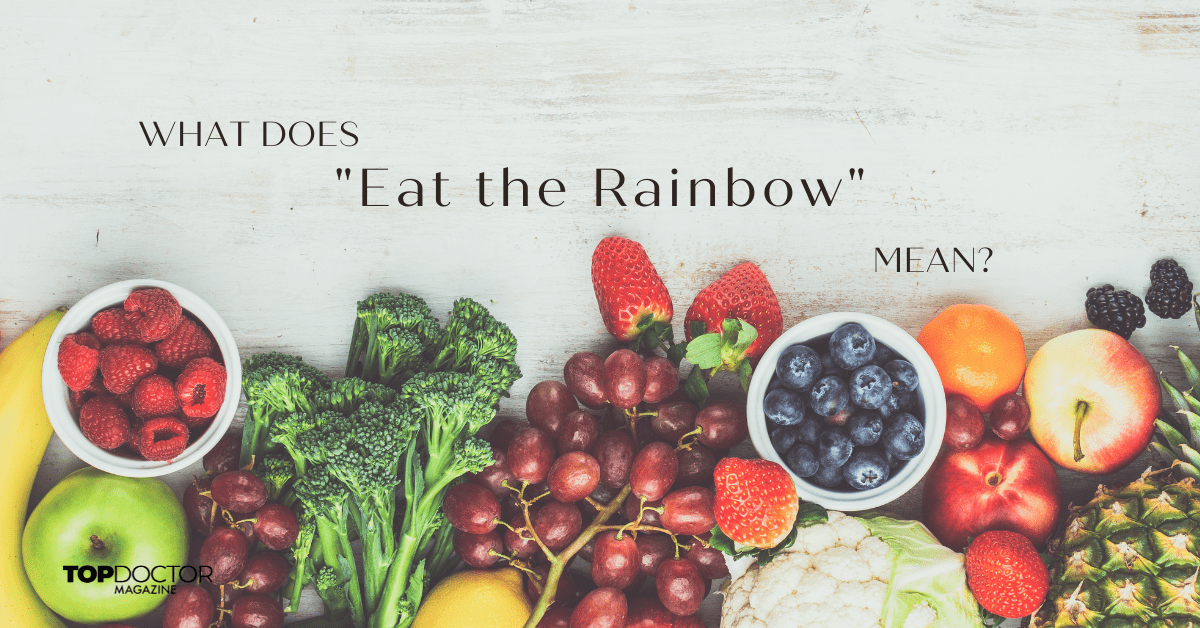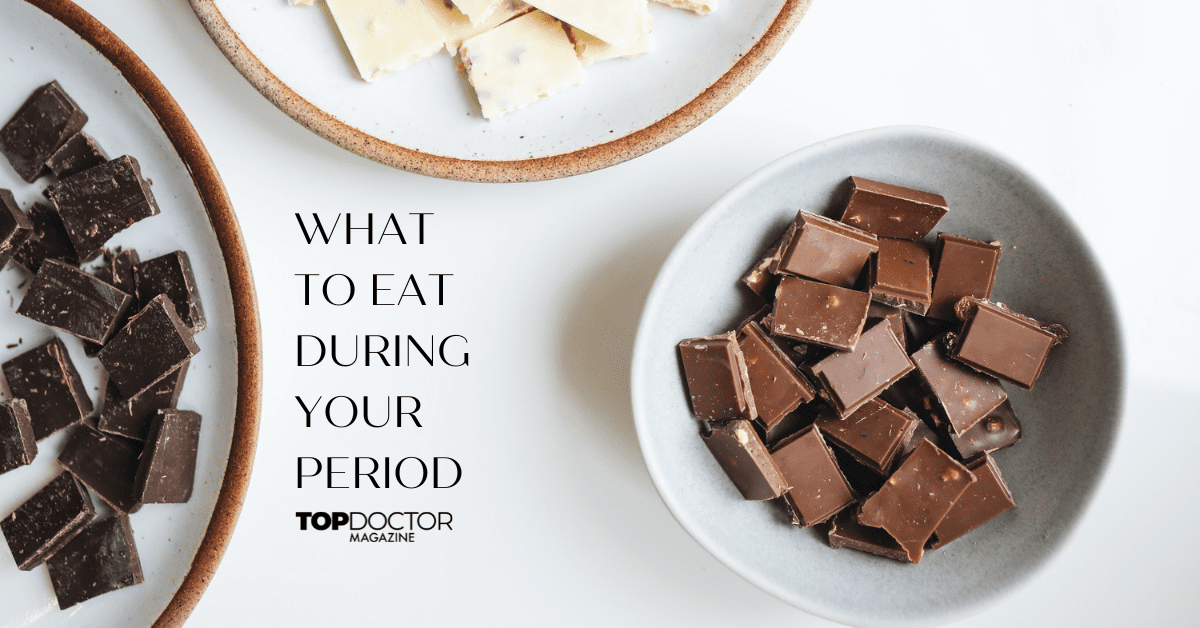Fruits and vegetables are the stepping stone of nutrition. Scores of studies and common knowledge agree upon the importance of eating enough fruits and vegetables, so we shouldn’t be surprised that we are encouraged to indulge in them more often. In discussions regarding how to include fruits and vegetables in our diets, we sometimes encounter a peculiar phrase: “eat the rainbow!” Simply put, diversity is the key to a nourishing and healthy diet.
What Does “Eat the Rainbow” Mean?
“Eat the rainbow” is a memorable call to eat fruits and vegetables of various colors. The color of a fruit or vegetable is a sign of the abundance of specific nutrients (i.e., phytonutrients) and how they can benefit your health.
“Eat the Rainbow” Benefits
Including solely a particular fruit or vegetable in your meal plan will only benefit a narrow part of your body. To ensure a more holistic approach, take full advantage of all the colors of the rainbow by regularly eating a variety of fruits and vegetables that provide a wide range of health benefits:
- Improved heart health (red, dark red, yellow, orange, green, blue, purple, white);
- Improved brain function and memory (red, green, blue, purple);
- Improved eyesight (green, yellow, orange);
- Lower cancer risk (red, dark red, yellow, orange, green, blue, purple, white);
- Improved immunity (yellow, orange);
- Regulated cholesterol levels (white);
- Improved oral health (green);
- Improved skin health (red, blue, purple).
“Eat the Rainbow” Foods and Colors
Red
Red fruits and vegetables are widely known for their cancer-fighting nutrients. They contain antioxidants, lycopene, vitamin C, flavonoids, etc., which will benefit your skin and heart health. The most popular red fruits and vegetables are:
- Apples;
- Cherries;
- Red onions;
- Red peppers;
- Strawberries;
- Tomatoes;
- Watermelon.
To get a boost of red nutrients and vitamins:
- Cut 2 red peppers and 1 red onion.
- Put them in a frying pan with olive oil at high heat.
- Add some salt and 1 tablespoon of sugar.
- Let them roast until they are softened.
- Add a little bit of wine.
- Add some fresh basil (green comes in!) and olive oil.
- Enjoy your meal full of red!
Orange and Yellow
Orange and yellow nutrients can improve poor blood circulation due to their rich chemical composition in hesperidin, a unique phytonutrient. Their high levels of vitamin A also support eye health. The most popular orange or yellow fruits and vegetables are:
- Bananas;
- Carrots;
- Corn;
- Lemons;
- Mango;
- Oranges;
- Pineapple;
- Sweet potatoes.
You can whip up and enjoy a banana-mango smoothie or some baked carrots with sweet potatoes while benefiting from a strong immunity boost!
Green
Green vegetables often contain lutein, omega-3 fatty acids and vitamin K, among other vital nutrients. Together, they take good care of your eyesight and bone health. In addition, leafy green vegetables help maintain cognitive functions throughout the years. Our favorite greens are:
- Asparagus;
- Avocado;
- Basil;
- Broccoli;
- Cucumbers;
- Green cabbage;
- Green herbs;
- Spinach.
Covering the green side of the rainbow is as easy as enjoying a slice of avocado toast in the morning, some broccoli as a fantastic side dish for pork chops and cucumbers in your cream cheese sandwich!
Blue and Purple
Blue and purple fruits are anti-inflammatory and antioxidant, aiding cellular and tissue recovery. A significant nutritional enhancement is brought by anthocyanins (i.e., water-soluble pigments), which can lower blood pressure, prevent brain dysfunctions and slow down cancer growth. Some tasty blue and purple fruits and vegetables are:
- Blackberries;
- Blueberries;
- Eggplant;
- Plums.
White
White might not be so colorful, but it is undoubtedly nutritious. White vegetables contain flavonoids that help manage high blood pressure by regulating cholesterol levels. In addition, they can decrease the risk of type 2 diabetes. Some healthy white vegetables to consider are:
- Cauliflower;
- Garlic;
- Mushrooms;
- Onions;
- Potatoes.
Our favorite white recipe is pasta with mushrooms:
- Roast some mushrooms with onions.
- Add tomato sauce to the pan.
- Add sugar and pepper.
- Let everything cook for five minutes.
- Put the pasta in the pan after boiling it and mix it with the sauce.
Three “Eat the Rainbow” Recipes
Rich, single-colored meals provide numerous health benefits, and you can vary the chosen color as you prepare your next meal. But you can also mix multiple rainbow colors in the same dish, as colorful plates provide more nutritional benefits. Our bodies like diversity, so you can’t go wrong with a mix of nourishing foods!
Rainbow Buddha Bowl
Main Ingredients
- 1 cup of uncooked quinoa;
- 2 cups of water;
- ½ teaspoon of turmeric powder;
- 1 pinch of sea salt;
- 1 cup of edamame beans;
- 1 zucchini, spiralized;
- 1 cup of carrot, grated;
- 1 cup of cooked beetroot, chopped;
- 1 avocado, chopped;
- ¼ of a thinly sliced cucumber ;
- ½ cup of hummus.
Ingredients for the Garlic-Tahini Dressing
- ¼ cup of tahini;
- 2 limes juice;
- 2 cloves of finely chopped garlic;
- 1 pinch salt and pepper;
- 2 tablespoons of water to thin.
How To Prepare
- Cook the quinoa. Add 1 cup of quinoa to 2 cups of water in a saucepan.
- After it starts to boil, add turmeric and a pinch of sea salt and simmer until cooked (12-15 minutes).
- Grate the zucchini and the carrots, chop the beetroot and slice the avocado and cucumber.
- Divide the quinoa, edamame, zucchini, carrots, beetroot, avocado and cucumber between bowls. Divide the hummus between bowls.
How To Prepare the Dressing
- Add ¼ cup of tahini, the juice of 2 limes, finely chopped garlic and a pinch of salt and pepper in a small bowl. Mix by whisking.
- Add splashes of water for thinning (about 2 tablespoons).
- Drizzle over the buddha bowls.
- Serve and enjoy!
Pasta With Mushrooms and Corn
This dish will give you a boost of red, white, yellow and green nutrients every time, as well as a healthy carbohydrate intake!
Ingredients
- 8 ounces of penne pasta;
- 8 ounces of sliced cremini mushrooms;
- 2 corn ears with their kernels sliced off;
- 2 thinly sliced scallions;
- 2 minced garlic cloves;
- ¼ cup of grated Parmesan cheese;
- 1 teaspoon of kosher salt;
- ½ teaspoon of black pepper;
- 1 tablespoon of olive oil.
How To Prepare
- Let the pasta boil until well cooked. As it boils, save a half cup of water.
- Add the corn and mushrooms to a heated pan with 1 tablespoon of olive oil. Let them cook until the mushrooms turn brown and caramelized and the corn is bright yellow. It should take at most 5 minutes.
- Stir in the thinly sliced scallions, garlic, salt and pepper.
- Put the pasta in the pan with ½ cup of boiled water. Let it evaporate. Mix them gently.
- Stir in the scallion greens, Parmesan cheese and parsley. Add more salt and pepper, according to your taste.
- Enjoy your meal!
Roasted Sweet Potatoes and Onions
As simple as it sounds, this recipe provides a variety of white and orange nutrients!
Ingredients
- 2 sweet onions cut into 1-inch chunks;
- 2 large sweet potatoes peeled and cut into 1-inch chunks;
- ¼ cup of toasted sliced almonds;
- ¼ cup of Amaretto liqueur;
- 1 teaspoon of dried thyme;
- 3 tablespoons of olive oil;
- Salt and pepper.
How To Prepare
- Put the onions, sweet potatoes and dried thyme with olive oil, salt, pepper and Amaretto liqueur in an oven preheated at 425 F.
- Cover the oven tray and let it in the oven for 30 minutes.
- Uncover the oven tray and let the food bake for 20 minutes. Sprinkle with almonds.
- Enjoy your meal!
Can You Eat Meat On the Rainbow Diet?
Eating the Rainbow isn’t necessarily a vegan diet since all it brings to the table is more various, colorful fruits and vegetables, without excluding meat or other animal-source foods. Instead, we recommend combining the Rainbow diet with protein-rich foods.
A Parting Reminder
Our bodies need a variety of colorful fruits and vegetables to function. “Eating the rainbow” can be a path to healthier, smarter eating that can provide you with the plethora of nutrients your body needs! Having variety in what you choose to eat will benefit your health in many ways.
At TopDoctor Magazine, our mission is to foster connections within the health and wellness community, acting as a vital bridge between doctors and patients and facilitating collaborations between medical companies and healthcare professionals.
Our purpose extends to empowering our readers, providing them with the knowledge to make well-informed healthcare and lifestyle decisions.
We take pride in being the ultimate resource for interviews with health and wellness leaders, delivering trending medical news, and covering a wide range of healthy living topics.






0 Comments